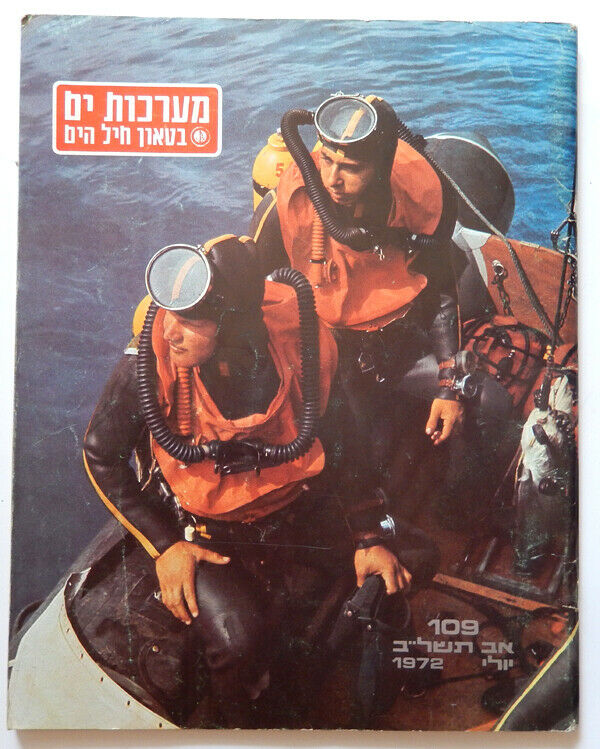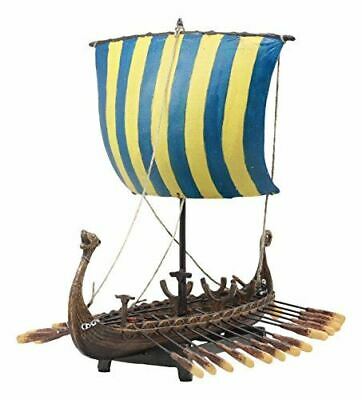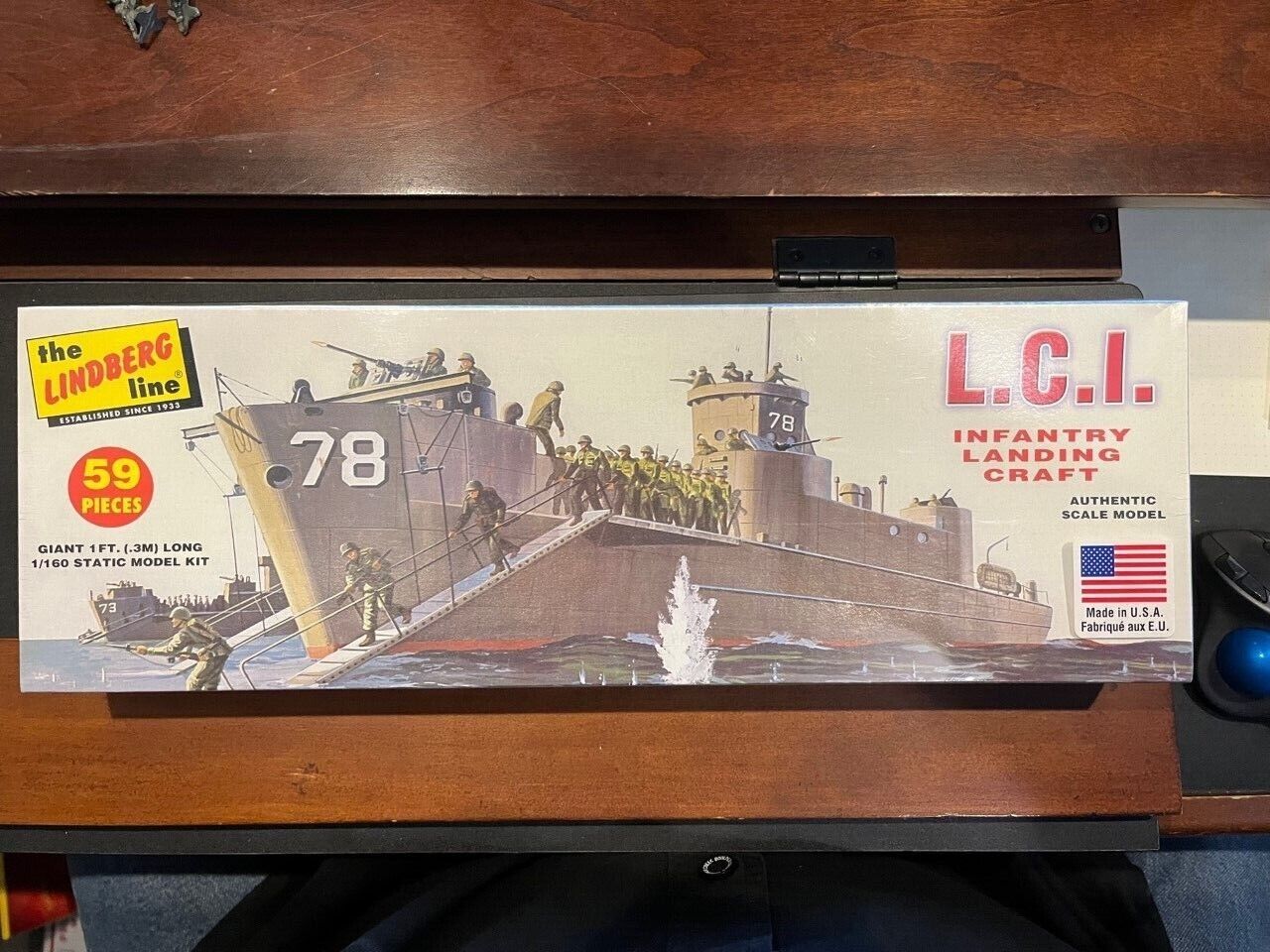-40%
HMS ZULU F124 BRITISH SHIP CARDBOARD MODEL ISRAEL NAVY MAGAZINE DIVERS 1972
$ 39.6
- Description
- Size Guide
Description
HMS ZULU F124 BRITISH SHIP CARDBOARD MODEL ISRAEL NAVY MAGAZINE DIVERS 1972For sale, Israel Navy official magazine "Maarachot Yam" dated to July 1972. On front cover photo Israeli navy commando on motor boat. Inside magazine attached self building cardboard model of F124 HMS Zulu, completed with the instruction page. This magazine contains articles and photos from the day life in the Israeli Navy and from the world. 52 Pages. Very good condition. Size: 10.5x8.5 inch,27x21 cm.
Winning bidder pays .00 Postage international registered air mail.
Authenticity 100% Guaranteed
Please have a look at my other listings
Good luck!
HMS Zulu was a Tribal-class frigate of the Royal Navy in service from 1964 to 1984. She was the third ship bearing the name of HMS Zulu, having been named after an ethnic group located primarily in KwaZulu-Natal Province, South Africa. Zulu was built by Alexander Stephen and Sons, of Govan, at a cost of £5,100,000.[3] She was launched on 3 July 1962 and commissioned on 17 April 1964.[4] Zulu was the only Tribal built with Seacat missiles; her six sister frigates were built with two 40 mm Bofors guns and fitted with the Seacat system during later refits. She was sold to the Indonesian Navy in 1984 and renamed Martha Khristina Tiyahahu. Contents 1 Royal Navy Service 2 Indonesian Navy Service 3 References 4 Publications Royal Navy Service In 1966, Zulu contributed to the Beira Patrol off the coast of East Africa, assisting in the enforcement of an oil blockade on Rhodesia.[5][6] During 1967 she was commanded by the future Admiral of the Fleet William Staveley. In 1972, a United States Navy P-3 Orion aircraft crashed on a mountain in northern Morocco with the loss of 14 crew. Zulu's Westland Wasp helicopter was sent to the wreckage site, where five bodies were found. In 1974, Zulu deployed to the West Indies.[citation needed] When Guatemala threatened to annex Belize in 1975, Zulu steamed to the area from an American port to augment British forces. Such was the urgency that Zulu left 20 sailors behind.[7] HMS Zulu, approaching Gibraltar, 23 September 1977 (IWM) In 1977, Zulu was presented at the Spithead Fleet Review, held in honour of Queen Elizabeth's Silver Jubilee. At this time she was part of the 4th Frigate Squadron.[8] Later that year, Zulu formed part of the eight-ship Group 6 deployment, led by the cruiser Tiger, on naval exercises in the Far East.[citation needed] Manpower shortages in the Royal Navy necessitated Zulu being reduced to reserve in 1979, as part of the Standby Squadron.[9][10] She was placed on the disposal list in 1981.[10] During the Falklands War, Zulu was taken out of reserve and prepared for active service,[11] recommissioning on 9 August.[12] She operated in home waters and as the West Indies Guard Ship. In November 1983 Zulu became the Gibraltar Guardship.[13] Before decommissioning on 30 March 1984, Zulu, as the last ship in commission with more than one gun turret, fired the Royal Navy's last "full" broadside.[14] Indonesian Navy Service Indonesia bought Zulu in 1984, renaming the frigate Martha Khristina Tiyahahu,[15] in honour of Martha Christina Tiahahu, who fought against Dutch colonial forces. The frigate was struck from the Indonesian Naval Vessel Register and currently awaits scrapping. The Type 81, or Tribal class, frigates were ordered and built as sloops[3] to carry out similar duties to the immediate post war improved Black Swan-class sloops and Loch-class frigates in the Persian Gulf. In the mid 1960s the seven Tribals were reclassified as second class general-purpose frigates to maintain frigate numbers. After the British withdrawal from East of Suez in 1971 the Tribals operated in the NATO North Atlantic sphere with the only update the fitting of Seacat missiles to all by 1977,[4] limited by their single propeller and low speed of 24 knots. In 1979-80 age and crew and fuel shortages saw them transferred to the stand-by squadrons; three were reactivated in 1982 during the Falklands War for training and guardship duties in the West Indies. Contents 1 History 2 Design 3 Shortcomings 4 Service 5 Ships 6 Footnotes 7 References History The Tribals were designed during the 1950s as a response to the increasing cost of single-role vessels such as the Type 14s. They were first such 'multi role' vessels for the Royal Navy. They were designed specifically with colonial 'gunboat' duties in mind, particularly in the Middle East. They were therefore designed to be self-contained warships with weapon and sensor systems to cover many possible engagements, air conditioning to allow extended tropical deployment and such 'modern' habitability features as all bunk accommodation (as opposed to hammocks). The fitting of gas turbine boost engines was specifically intended to allow the frigates to almost instantly leave ports and naval bases in the event of nuclear war, rather than have to spend four to six hours to flash up the steam boilers. The G6 gas turbine proved reliable and was generally used to leave port during the frigates career and paved the way for gas turbine propulsion to become universal in the RN within 30 years. Design They were the first class of the Royal Navy to be designed from the start to operate a helicopter and the first small escorts to carry a long-range air search radar, the Type 965 with a single 'rake' AKE-1 antenna. They were armed with two QF 4.5-in (113 mm) Mark 5 guns salvaged from scrapped Second World War destroyers. Although these mountings were refurbished with Remote Power Control (RPC) operation, they still required manual loading on an exposed mounting. Originally the intended gun armament was two twin 4-inch (102 mm) Second World War standard mounts, then scheduled for a twin 3-inch (76 mm) 70 caliber mount but that and the required magazine increased weight by 256 tons[5] and then designed a gun fit of two single automatic 4-inch guns which required a hull 10 ft (3.0 m) longer[6] but were - like the twin 3/70s - too expensive and resulted in a 3000-ton displacement unacceptable for a sloop or frigate design for the RN/Treasury in the 1960s[7] of the sort fitted to the Chilean Almirante-class destroyer. The automatic guns were rejected on account of weight, space and cost.[7] From the outset they were designed to carry the new GWS-21 Seacat anti-aircraft missile system[8] anti-aircraft missile system but all except Zulu initially carried single Mark 7 40 mm Bofors guns in lieu. The rest of the class were fitted with Seacat in the 1970s[9] using surplus missile systems, left over from Battle-class destroyers and County-class destroyer refits. The Tribals were the first modern RN ships designed to use a combination of power sources, a feature which had been trialled with limited success in the 1930s in the minelayer HMS Adventure. An additive mix of steam and gas turbine called "COmbined Steam and Gas" COSAG was used. This gave the rapid start-up and acceleration of a gas turbine engine coupled with the cruising efficiency and reliability of the steam turbine. They would cruise on the steam plant and use both systems driving the same shaft for a high-speed "boost". They suffered however from being single-shaft vessels which severely limited manoeuvrability, acceleration and deceleration. The single screw proved significantly limiting when they were used in the 1970s Cod Wars in terms of manoeuvering in ramming manoeuvers, for and against, Icelandic coast guard cutters. The cramped awkward nature of the helicopter pad and handling provision was also exposed in the 1976 Cod War and was a major reason that some Rothesay-class frigates were given further refits in preference to the Tribals and maintained in higher status reserve in the early 1980s limitations on defence spending. Shortcomings The costs for the Tribal Class ships escalated above the costs first envisaged and the original order of ships, (over twenty), was cancelled after the first seven ships had been completed. Only four would have been built if it had been possible to cancel the contractual commitments the Royal Navy had entered into for the supply of complex engines and machinery[10] for eight frigates. The ships were rather small, at 360 ft (110 m), which reduced the options for later modernisation and were always going to be limited by their single-shaft propulsion. The class were still good warships in spite of being fitted with outdated guns, (they were described by some as 'guided flagpoles')[11] if sometimes capable of 18 rounds per minute for the first two minutes, and proved the usefulness of the general purpose frigate concept and gas turbine propulsion, but the average unit costs of the Type 81s completed in 1963-64 was £500,000 more than the first eight Leanders[12] and the final cost of over £5 million of the first Tribal, Ashanti, completed in 1961 was considered too high and hence limited the number actually built; the original intent was to build 23 Type 81s. This meant that further 1960s RN frigate development would be based on the more conservative steam-powered Type 12 (Whitby) class, subsequently modernised in the Type 12M (Rothesay) class and finalised in the excellent Type 12I (Leander)-class. The later Royal Navy Type 21 (Amazon) class "General Purpose Frigates" were originally envisaged for a similar gunboat role to the Tribal-class ships and to operate East of Suez. Service The class served throughout the 1960s and into the 1970s fulfilling their designed general purpose "colonial gunboat" role. When change in British foreign policy made this role redundant they found themselves being pressed into service in home waters in the Cod Wars of the 1970s. They were not particularly suited to these duties however, as they had a hull form optimised for the calm, shallow water of the Persian Gulf and with only a single shaft were unable to manoeuvre with the Icelandic patrol vessels at close quarters. All were decommissioned from the Royal Navy during the mid-to-late 1970s with the manpower crisis also attributing to the rapid removal of the class from service. They were however given a brief reprieve by the Falklands War, with 3 mothballed Tribals (Gurkha, Tartar and Zulu) being reactivated to cover ships deployed to the South Atlantic or undergoing long-term repairs after the conflict. The remaining units were cannibalised for spare parts to enable the 3 ships to be refitted. These ships were sold in 1984 to Indonesia. Ships Pennant Name Builder Laid Down Launched Accepted into service Commissioned Estimated building cost[13] Fate F117 Ashanti (a) Yarrow & Co Ltd, Glasgow (b) Associated Electrica Industries Ltd, Manchester [14] 15 January 1958 [15] 9 March 1959 [15] November 1961 [14] 23 November 1961 [15] £5,315,000 [14] Sunk as target 1988 F131 Nubian (a) HM Dockyard, Portsmouth (b) Associated Electrica Industries Ltd, Manchester [16] 7 September 1959 [15] 6 September 1960 [15] November 1962 [16] 9 October 1962 [15] £4,360,000 [16] Sunk as target 1987 F122 Gurkha (a) JI Thornycroft & Co Ltd, Southampton (b) JI Thornycroft & Co Ltd, Southampton (steam and gas turbines) (b) Parsons Marine Turbine Co Ltd, Wallsend-on-Tyne (gearing) [16] 3 November 1958 [15] 11 July 1960 [15] February 1963 [16] 13 February 1963 [15] £4,865,000 [16] Indonesian KRI Wilhelmus Zakarias Yohannes (332) F119 Eskimo (a) JS White & Co Ltd, Cowes, Isle of Wight (b) JS White & Co Ltd, Cowes, Isle of Wight (steam and gas turbines) (b) Fairfield Shipbuilding and Engineering Co Ltd, Govan, Glasgow (gearing) [16] 22 October 1958 [15] 20 March 1960 [15] February 1963 [16] 21 February 1963 [15] £4,560,000 [16] Sunk as target 1986 F133 Tartar (a) HM Dockyard, Devonport (b) Vickers-Armstrongs (Engineers) Ltd, Barrow-in-Furness (steam turbines and gearing) (b) Yarrow and Co Ltd, Glasgow (gas turbine) [17] 22 October 1959 [15] 19 September 1960 [15] April 1963 [17] 26 February 1962 [15] £4,300,000 [17][18] Indonesian KRI Hasanuddin (333) F125 Mohawk (a) Vickers-Armstrongs (Shipbuilders) Ltd, Barrow-in-Furness (b) Associated Electrical Industries Ltd, Manchester (gas turbine) (b) Vickers-Armstrongs (Engineers) Ltd, Barrow-in-Furness (steam turbines and gearing) [17] 23 December 1960 [15] 5 April 1962 [15] December 1963 [17] 29 November 1963 [15] £4,750,000 [17] Sold for scrap F124 Zulu (a) Alex Stephen & Sons, Ltd, Linthouse, Glasgow (b) JI Thornycroft & Co Ltd, Southampton (steam and gas turbines) (b) Parsons Marine Turbine Co Ltd, Wallsend-on-Tyne (gearing) [19] 13 December 1960 [15] 3 July 1962 [15] April 1964 [19] 17 April 1964 [15] £5,100,000 [19] Indonesian KRI Martha Khristina Tiyahahu (331)















